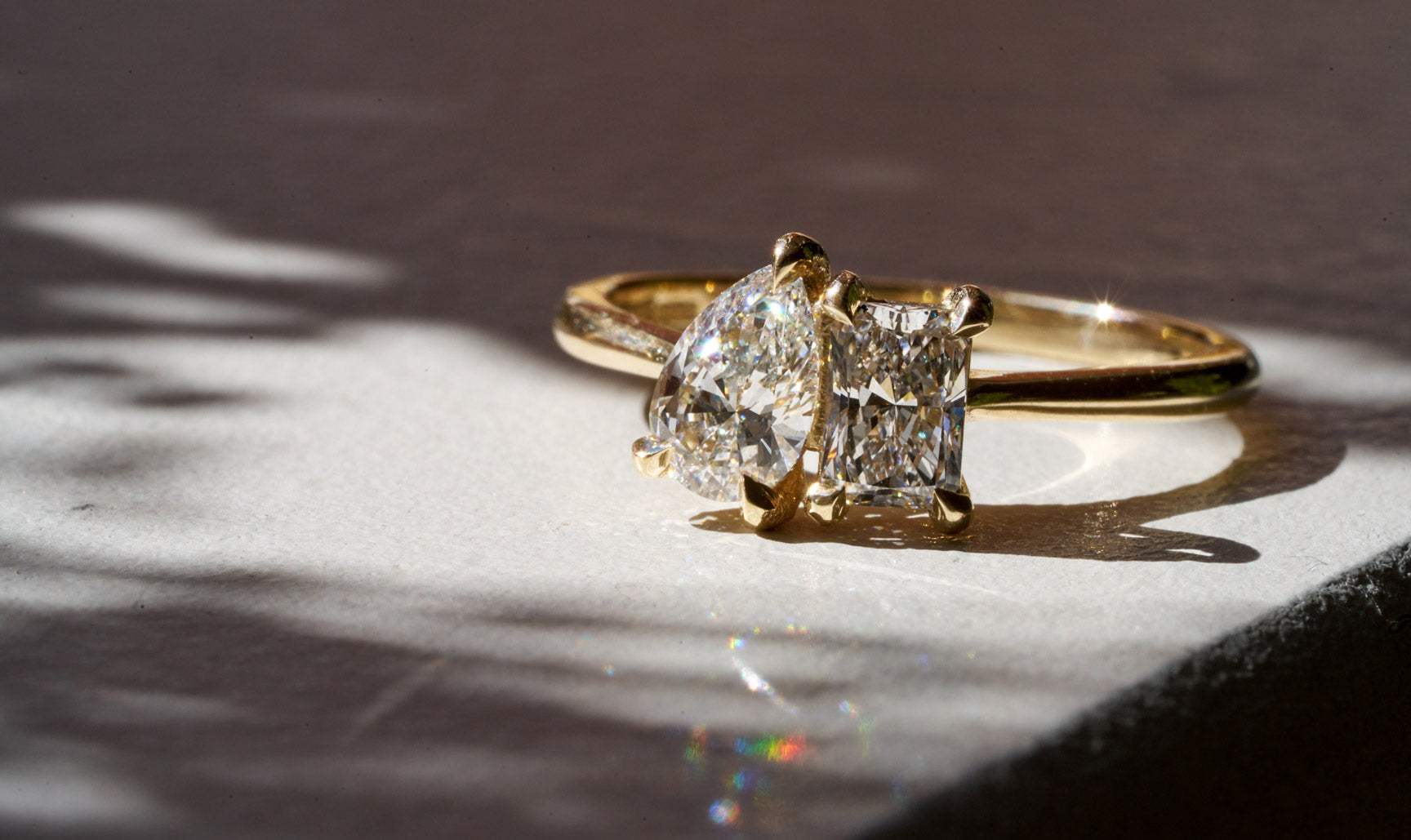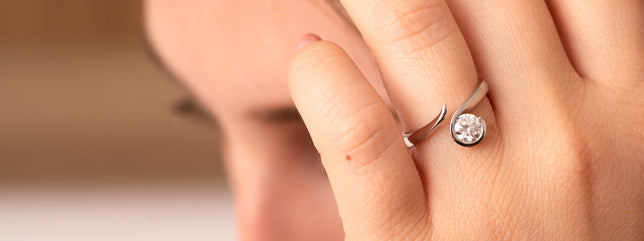Introduction
Lab-grown diamonds have taken the jewelry world by storm, offering a brilliant alternative to natural diamonds. These exquisite gems, created in high-tech laboratories, are every bit as stunning as their mined counterparts but come with added ethical and environmental benefits. As you explore the captivating realm of lab-grown diamonds, one element of ring design that you’ll encounter is the claws—small yet crucial features that play a big role in both the aesthetics and security of the ring. If you’re new to the concept of claws or curious about how they affect your diamond ring, you’re in the right place. Let’s dive into what claws are, the different types available, and how they can impact the look and durability of your lab-grown diamond ring.
What Are Lab-Grown Diamonds?
Lab-grown diamonds, also referred to as synthetic or cultured diamonds, are created through advanced technological processes that replicate the natural conditions under which diamonds form. Unlike mined diamonds, which are dug from the earth, lab-grown diamonds are produced in controlled environments using two main methods claws for lab grown diamond rings: High Pressure High Temperature (HPHT) and Chemical Vapor Deposition (CVD). These methods simulate the extreme heat and pressure or the chemical environment found deep within the earth’s mantle, resulting in diamonds that are chemically, physically, and optically identical to natural diamonds.
What makes lab-grown diamonds so special?
They are celebrated for their stunning brilliance and high quality, matching the best of natural diamonds. Plus, they come with the added perks of being more affordable and ethically sound. By choosing a lab-grown diamond, you’re not only getting a beautiful gem but also supporting sustainable practices. These diamonds offer the same sparkle, durability, and clarity as mined diamonds, making them a fantastic choice for engagement rings, wedding bands, or any piece of fine jewelry.
Why Choose Lab-Grown Diamonds?
Choosing a lab-grown diamond is more than just a decision about what looks best on your finger—it’s also a choice about values and budget. One of the biggest draws of lab-grown diamonds is their cost-effectiveness. Lab-grown diamonds can be up to 30% less expensive than natural diamonds of the same size and quality. This price difference can mean you get a larger, more impressive diamond for the same budget, or you can invest in other elements of your ring, like the setting or additional diamonds.
Ethical and Environmental Considerations
are also significant factors. Lab-grown diamonds avoid the ethical issues associated with diamond mining, such as conflict diamonds and the environmental impact of mining operations. For those who are concerned about the ecological footprint of their purchases, lab-grown diamonds offer a guilt-free alternative. Additionally, these diamonds support innovation in technology and sustainable practices, contributing to a more responsible industry overall.
Lastly, the high quality of lab-grown diamonds is a major advantage. They are created under conditions that ensure they are just as pure and brilliant as natural diamonds. They come with the same certifications and grading as natural diamonds, so you can be confident in the quality of your gem.
What Are Claws in Jewelry?
In the world of jewelry, claws—also known as prongs—are the metal components designed to hold a gemstone securely in place. These small but mighty features play a critical role in the overall design and functionality of a ring. Imagine them as the “guardians” of your diamond, holding it safely while allowing it to sparkle brilliantly. Claws are usually crafted from the same metal as the ring band and are carefully shaped to secure the diamond without overwhelming its natural beauty.
Claws are more than just practical elements; they also influence the visual impact of the ring. A well-chosen claw setting can enhance the diamond’s brilliance by maximizing the amount of light that reaches the stone. It’s a delicate balance of form and function, where the design must not only hold the diamond in place but also highlight its natural beauty.
Types of Claws for Diamond Rings
When it comes to claw settings for diamond rings, there are several types, each with its own unique characteristics and benefits. Understanding these different types will help you choose the perfect setting for your lab-grown diamond.
Single Claw Settings
The single claw setting is the most minimalist approach to securing a diamond. It uses just one claw to hold the gemstone in place, focusing all attention on the diamond itself. This setting is particularly popular for those who prefer a clean, understated look that emphasizes the diamond’s sparkle.
Why choose a single claw setting?
If you love simplicity and want your diamond to be the main focus of the ring, this is the setting for you. The single claw design allows more light to pass through the diamond, enhancing its sparkle and brilliance. However, it’s important to note that this setting offers less security compared to other types, so it may not be the best choice for those who lead an active lifestyle or need extra protection for their gemstone.
Lab grown diamonds, also known as synthetic diamonds or cultured diamonds, are genuine diamonds created in a controlled laboratory environment. Unlike natural diamonds, which form over billions of years under high pressure and temperature conditions deep within the Earth, lab-grown diamonds are produced using advanced technological processes that replicate these natural conditions in just a few weeks.
Triple Claw Settings
For those who want the ultimate in security and a distinctive look, the triple claw setting is an excellent choice. This design uses three claws to hold the diamond in place, offering the highest level of protection for your precious gem.


